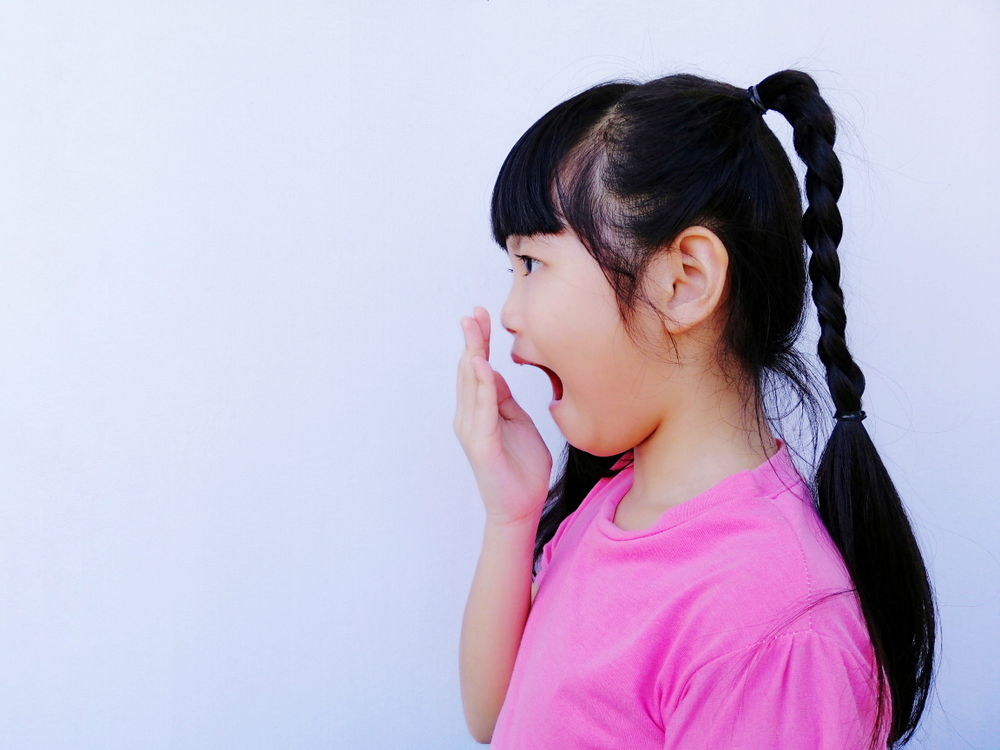
Causes of Bad Breath in Children and What To Do
Bad breath in children can be surprising and concerning for parents, but it’s often caused by manageable factors.
From common habits like skipping proper brushing to temporary health issues, there are many reasons a child might have unpleasant breath.
Let’s explore the reasons behind bad breath in children and how you can help them maintain fresh, healthy smiles.
Causes of Bad Breath in Children
General Causes
Bad breath can stem from various everyday habits or natural factors, and it’s often easy to address once the root cause is understood. Here are some common contributors:
- Poor oral hygiene: Skipping proper brushing and flossing allows food particles to remain in the mouth, leading to bacterial growth and unpleasant odours.
- Digestive issues: Some gastrointestinal problems can result in distinct breath odours, signalling a need to look beyond oral hygiene.
- Tongue bacteria: The tongue plays a bigger role in breath than most realize. Not brushing it thoroughly allows bacteria to accumulate, causing bad smells.
- Tongue anatomy: Children with thicker papilla or more grooves on their tongues may experience more plaque buildup, making them more prone to bad breath. These grooves can trap food particles and bacteria, which become a source of unpleasant smells over time.
- Dietary influences: Foods like garlic and onions can temporarily cause bad breath. While this is usually harmless, it’s worth noting if it becomes a recurring issue.
Helping your child brush their teeth and tongue regularly, combined with occasional checks for any patterns of bad breath, can go a long way toward keeping their breath fresh.
Bad Breath from Braces
Braces are an exciting step toward a straighter smile but can bring challenges like bad breath if oral hygiene isn’t maintained.
- Braces trap food particles easily, creating an environment for bacteria to thrive.
- Poor oral hygiene while wearing braces allows plaque to build up, leading to odours that linger.
Encouraging your child to clean their braces carefully—brushing after meals and using tools like floss threaders or water flossers—can help minimize the chances of bad breath during orthodontic treatment.
Bad Breath from Medications
Sometimes, the culprit behind bad breath isn’t in the mouth but in the medicine cabinet. Certain medications can have a noticeable effect on breath:
- Decongestants and antihistamines, often used for allergies or colds, can reduce saliva production. Saliva plays a vital role in rinsing away plaque and bacteria, so a dry mouth often leads to bad breath.
- Common medications like Tylenol Cold and Sinus, which include decongestants, can also contribute to this issue.
- Dry mouth caused by reduced saliva is a frequent side effect of medications and can exacerbate bad breath.
If your child is taking medications and you notice an increase in bad breath, encouraging them to stay hydrated or discussing options with their healthcare provider can make a big difference.
Bad Breath from Gum Disease
Gum health plays an important role in preventing bad breath. If your child’s gums show signs of trouble, it might be time to take a closer look.
- Bright red and puffy gums: Healthy gums should be pink and firm. Red, swollen gums can signal inflammation or infection.
- Gum boils: These are small pimples on the gum filled with pus, often indicating an infection that needs prompt attention.
- Gum-related diseases are painful conditions that can lead to very unpleasant breath.
- For example, Acute Necrotizing Ulcerative Gingivitis (ANUG), though rare, this condition is both painful and a significant contributor to bad breath.
- Viral infections: Certain viral infections, for example like a first herpes infection, can cause bad breath in children.
- Children with braces may experience more gum health issues because food easily gets trapped, creating the perfect environment for bacteria to grow.
Paying attention to these signs and encouraging proper oral care can help your child avoid complications and maintain fresh breath.
Medical Conditions Resulting in Bad Breath
Sometimes, the cause of bad breath goes beyond the mouth. Certain medical conditions can contribute to noticeable changes in how a child’s breath smells.
- Digestive issues: Problems in the digestive tract can influence breath odours.
- GERD (Gastroesophageal Reflux Disease): Acid reflux can cause regurgitation, leading to a sour, pungent smell in the breath. If this occurs frequently, especially after meals, consult your pediatrician for advice.
- Acidic taste after eating could point to digestive issues like acid reflux. In such cases, consulting a pediatrician is recommended.
- Tonsils and tonsillar crypts:
- Large tonsils with deep folds, called tonsillar crypts, can trap food particles and bacteria, resulting in the formation of tonsil stones, which emit a strong odour.
If your child’s bad breath persists despite good oral hygiene, a visit to a medical professional can help rule out or address underlying medical conditions.
Bad Breath from Dental Infections
Dental infections can silently develop in children, often going unnoticed until they’ve been present for months. These hidden issues can lead to significant bad breath.
- Silent infections: Some dental infections don’t cause pain, so your child might not mention any discomfort. Parents often only discover the problem when the breath odour becomes noticeable.
- Reluctance to report issues: Kids might avoid mentioning gum problems because they’re worried about visiting the dentist.
Encouraging regular dental checkups and open communication about oral health can help catch these problems early and prevent persistent bad breath.
Read our resource: How Do You Know If Your Child Has Cavities?
Solutions for Bad Breath in Children
When it comes to addressing bad breath in children, a mix of good oral hygiene habits and practical tips can make a significant difference. Here are some effective solutions to consider.
Emphasize Oral Hygiene
A strong foundation of oral care is the best way to tackle bad breath:
- Daily brushing and flossing: Ensure your child brushes their teeth twice a day, flosses daily, and includes their tongue in the routine.
- Use tongue scrapers: These U-shaped tools can help remove bacteria from the surface of the tongue more effectively than brushing alone.
- Inspect the tonsils: Checking for tonsil stones can help identify hidden causes of bad breath. Older children, like seven-year-olds, are often more cooperative during these checks than toddlers.
Gargling
Gargling can reach areas of the mouth that brushing may miss, especially at the back of the throat:
- Encourage your child to gargle thoroughly with water or mouthwash to remove trapped food particles. Use mouthwash without alcohol.
- Saltwater rinses: While primarily soothing for sore throats, saltwater can also contribute to better oral hygiene.
Maintain Regular Dental Visits
Routine dental care is critical for identifying and addressing potential problems:
- Professional cleanings: These help prevent cavities and remove plaque that at-home brushing might miss.
- Dentists can also recommend personalized solutions for persistent bad breath.
Read our resource: How Often Should You Take Your Child to the Dentist?
Special Care for Children with Braces
Braces require extra attention to keep the mouth clean:
- Regular brushing and flossing: Focus on areas around the brackets and wires to prevent food from getting trapped.
- Water flossers: These can be particularly helpful for clearing out food debris from hard-to-reach areas around braces.
Build Good Habits Early
Instilling good oral care habits from a young age can prevent many common causes of bad breath. Helping your child understand the importance of a complete oral hygiene routine will set them up for success in keeping their breath fresh and their smile healthy.
Kids Dental Group Can Help
Bad breath in children can often be resolved with simple adjustments, but if you’re still concerned or suspect a deeper issue, we’re here to help.
At Kids Dental Group, we’re happy to provide a thorough checkup and personalized care to keep your child’s smile healthy and fresh.
Feel free to reach out to us—we’re just a call away!
